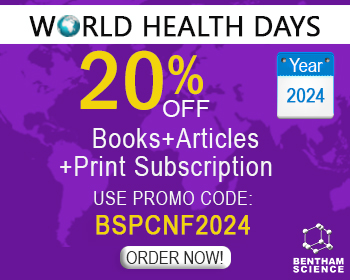Abstract
Fungal diseases are severe and have very high morbidity as well as up to 60% mortality for patients diagnosed with invasive fungal infection. In this review, in vitro and in vivo studies provided us with the insight into the role of Candida virulence factors that mediate their success as pathogens, such as: membrane and cell wall (CW) barriers, dimorphism, biofilm formation, signal transduction pathway, proteins related to stress tolerance, hydrolytic enzymes (e.g. proteases, lipases, haemolysins), and toxin production. The review characterized the virulence of clinically important C. albicans, C. parapsilosis, C. tropicalis, C. glabrata and C. krusei. Due to the white-opaque transition in the mating-type locus MTL-homozygous cells, C. albicans demonstrates an advantage over other less related species of Candida as a human commensal and pathogen. It was reviewed that Candida ergosterol biosynthesis genes play a role in cellular stress and are essential for Candida pathogenesis both in invasive and superficial infections. Hydrolases associated with CW are involved in the host-pathogen interactions. Adhesins are crucial in colonization and biofilm formation, an important virulence factor for candidiasis. Calcineurin is involved in membrane and CW stress as well as virulence. The hyphae-specific toxin, named candidalysin, invades mucosal cells facilitating fungal invasion into deeper tissues. Expression of this protein promotes resistance to neutrophil killing in candidiasis. The virulence factors provide immunostimulatory factors, activating dendric cells and promoting T cell infiltration and activation. Targeting virulence factors, can reduce the risk of resistance development in Candida infections.
Keywords: Candida, pathogenicity, virulence targets, surface barriers, biofilm, morphogenesis, toxin, stress regulator.
[http://dx.doi.org/10.1016/j.cmi.2015.09.018] [PMID: 26432192]
[http://dx.doi.org/10.1038/s41598-018-33662-x] [PMID: 30323257]
[http://dx.doi.org/10.3390/ijms13010774] [PMID: 22312285]
[http://dx.doi.org/10.1111/1469-0691.12539] [PMID: 24506442]
[http://dx.doi.org/10.1371/journal.pone.0165346] [PMID: 27798663]
[http://dx.doi.org/10.1186/s12879-018-3487-9] [PMID: 30419841]
[http://dx.doi.org/10.1099/jmm.0.045054-0] [PMID: 23180477]
[http://dx.doi.org/10.1093/jpids/piv048] [PMID: 26407279]
[http://dx.doi.org/10.1186/s12879-014-0609-x] [PMID: 25420435]
[http://dx.doi.org/10.1016/j.tim.2016.09.004] [PMID: 27717660]
[http://dx.doi.org/10.1038/nrmicro.2017.107] [PMID: 29062072]
[http://dx.doi.org/10.1128/AAC.45.11.3037-3045.2001] [PMID: 11600353]
[http://dx.doi.org/10.15698/mic2017.11.599] [PMID: 29167801]
[http://dx.doi.org/10.1038/s41368-018-0013-2] [PMID: 29555898]
[http://dx.doi.org/10.1016/j.meegid.2013.07.013] [PMID: 23871837]
[http://dx.doi.org/10.1073/pnas.1009845107] [PMID: 21135205]
[http://dx.doi.org/10.1128/AAC.47.8.2404-2412.2003] [PMID: 12878497]
[http://dx.doi.org/10.1128/mBio.01755-18] [PMID: 30228244]
[http://dx.doi.org/10.1371/journal.pbio.1001692] [PMID: 24204207]
[http://dx.doi.org/10.1016/j.cmi.2017.02.002] [PMID: 28196695]
[http://dx.doi.org/10.1099/mic.0.26980-0] [PMID: 15256547]
[http://dx.doi.org/10.1128/AAC.00683-11] [PMID: 21986821]
[http://dx.doi.org/10.1128/EC.3.4.955-965.2004] [PMID: 15302828]
[http://dx.doi.org/10.1016/j.micinf.2016.01.002] [PMID: 26806384]
[http://dx.doi.org/10.1074/jbc.M113.478743] [PMID: 23720756]
[http://dx.doi.org/10.1093/femsyr/fov042] [PMID: 26066553]
[http://dx.doi.org/10.1093/infdis/jir351] [PMID: 21791665]
[http://dx.doi.org/10.1093/femsyr/fov043] [PMID: 26071437]
[http://dx.doi.org/10.1128/mBio.01874-14] [PMID: 25467440]
[http://dx.doi.org/10.1371/journal.pgen.1006142] [PMID: 27341673]
[http://dx.doi.org/10.1038/nature08064] [PMID: 19465905]
[http://dx.doi.org/10.1016/j.vaccine.2009.10.082] [PMID: 19887129]
[http://dx.doi.org/10.3390/jof1020277] [PMID: 29376912]
[http://dx.doi.org/10.1155/2013/134852]
[http://dx.doi.org/10.1093/femsyr/fov111] [PMID: 26678748]
[http://dx.doi.org/10.1016/j.it.2010.06.007] [PMID: 20705510]
[http://dx.doi.org/10.1007/s12223-017-0500-4] [PMID: 28164244]
[http://dx.doi.org/10.1016/j.fgb.2009.09.002] [PMID: 19755168]
[http://dx.doi.org/10.1371/journal.ppat.1001069] [PMID: 20865172]
[http://dx.doi.org/10.1111/j.1365-2958.2005.05037.x] [PMID: 16468987]
[http://dx.doi.org/10.1128/IAI.71.9.5344-5354.2003] [PMID: 12933882]
[http://dx.doi.org/10.1038/nature17625] [PMID: 27027296]
[http://dx.doi.org/10.1534/g3.112.002279] [PMID: 22690377]
[http://dx.doi.org/10.1371/journal.pgen.1006405] [PMID: 27788136]
[http://dx.doi.org/10.3390/pathogens5010033] [PMID: 26999221]
[PMID: 28956402]
[http://dx.doi.org/10.1371/journal.pgen.1006948] [PMID: 28793308]
[http://dx.doi.org/10.1111/mmi.13862] [PMID: 29030879]
[http://dx.doi.org/10.1128/EC.00071-13] [PMID: 23563485]
[http://dx.doi.org/10.1016/j.resmic.2012.02.005] [PMID: 22426249]
[http://dx.doi.org/10.1038/ncomms7741] [PMID: 25824284]
[http://dx.doi.org/10.1371/journal.pgen.1002562] [PMID: 22438817]
[http://dx.doi.org/10.1126/sciimmunol.aam8834] [PMID: 29101209]
[http://dx.doi.org/10.1016/j.mib.2013.05.004] [PMID: 23756050]
[http://dx.doi.org/10.1016/j.mib.2010.05.001] [PMID: 20627672]
[http://dx.doi.org/10.1016/j.mib.2011.09.007] [PMID: 21955887]
[PMID: 23895281]
[http://dx.doi.org/10.1534/g3.115.017566] [PMID: 25758825]
[http://dx.doi.org/10.1016/j.cell.2011.10.048] [PMID: 22265407]
[http://dx.doi.org/10.3389/fcimb.2017.00414] [PMID: 28983472]
[http://dx.doi.org/10.1016/j.ijmm.2011.04.009] [PMID: 21555244]
[http://dx.doi.org/10.1371/journal.ppat.1006144] [PMID: 28182769]
[http://dx.doi.org/10.1155/2014/456878] [PMID: 24803934]
[http://dx.doi.org/10.3109/13693786.2010.530032] [PMID: 21039308]
[http://dx.doi.org/10.1093/femspd/ftw101]
[PMID: 29371549]
[http://dx.doi.org/10.1016/j.ijmm.2011.04.009] [PMID: 21555244]
[http://dx.doi.org/10.1128/MMBR.00009-06] [PMID: 17554048]
[http://dx.doi.org/10.1128/mBio.01646-16] [PMID: 27935835]
[http://dx.doi.org/10.1155/2012/363764] [PMID: 22235206]
[http://dx.doi.org/10.1128/IAI.01244-09] [PMID: 20008535]
[http://dx.doi.org/10.1016/j.chom.2016.10.001] [PMID: 27923704]
[http://dx.doi.org/10.1038/s41467-018-03014-4] [PMID: 29467448]
[http://dx.doi.org/10.2217/fmb.09.88] [PMID: 19895219]
[http://dx.doi.org/10.4049/jimmunol.1500909] [PMID: 26188072]
[http://dx.doi.org/10.1016/j.cyto.2011.05.007] [PMID: 21641233]
[http://dx.doi.org/10.1086/652783] [PMID: 20415537]
[http://dx.doi.org/10.1080/13693780701837157] [PMID: 18404553]
[http://dx.doi.org/10.1099/mic.0.2006/001610-0] [PMID: 17185534]
[http://dx.doi.org/10.1371/journal.ppat.1005663] [PMID: 27280548]
[http://dx.doi.org/10.1371/journal.pone.0107805] [PMID: 25229476]
[http://dx.doi.org/10.1016/j.cyto.2015.07.025] [PMID: 26276374]
[http://dx.doi.org/10.1128/AAC.00443-09] [PMID: 19546367]
[http://dx.doi.org/10.1073/pnas.91.18.8324] [PMID: 8078881]
[http://dx.doi.org/10.1016/j.ejmech.2018.02.077] [PMID: 29533875]
[http://dx.doi.org/10.1038/npjbiofilms.2015.12] [PMID: 26691764]
[http://dx.doi.org/10.2217/fmb-2016-0141] [PMID: 28287299]
[http://dx.doi.org/10.2174/1389557518666180924121209] [PMID: 30246638]





























